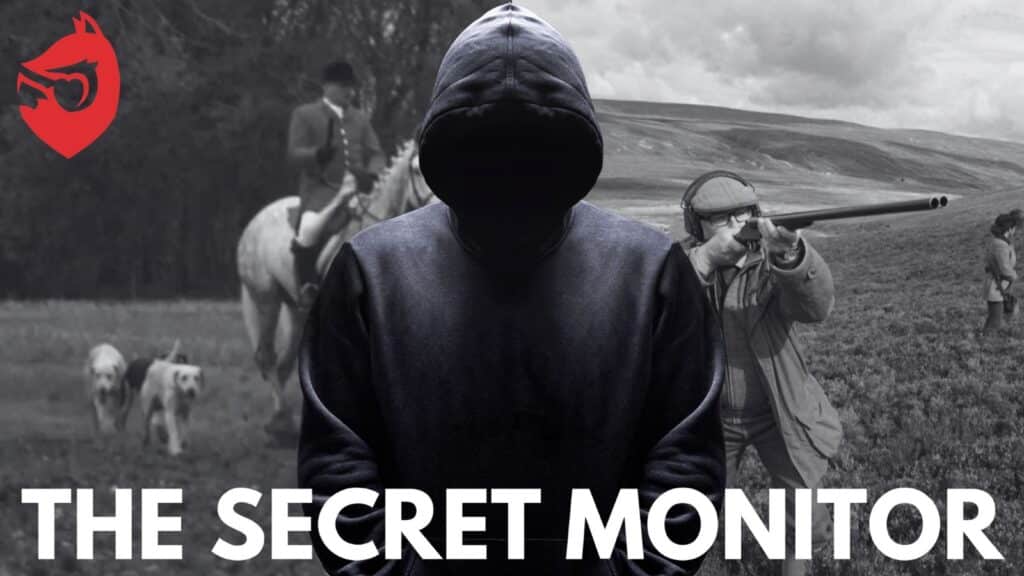Damaging stories from inside hunting and shooting have been circulating for years. Both industries present a public face that aims to convince politicians and the public alike that everything they do is lawful or ‘sustainable’. The truth is very different, and much of what takes place is out sight. Supporters, clients and even the police seem happy to ‘turn a blind eye’- but not everyone is looking the other way.
There is always someone watching, always someone listening. The Secret Monitor.
When shooting lobbyists promote their horrible industry, an industry that involves killing literally millions of birds and trapping and killing countless native predators in snares and traps, they use terms like ‘tradition’ and ‘respect for the quarry’ and they persuade politicians (including Steve Reed, the new Secretary of State for the Environment) that shooting is somehow ‘sustainable’…
The Secret Monitor begs to differ. Back in September the Secret Monitor went to Linhope Estate, a huge area of moorland within Northumberland National Park owned by Ralph Percy, 12th Duke of Northumberland. The scale of the shooting operation they recorded – all of it involving non-native birds reared to be shot – is genuinely shocking…
Northumberland National Park and the Percys
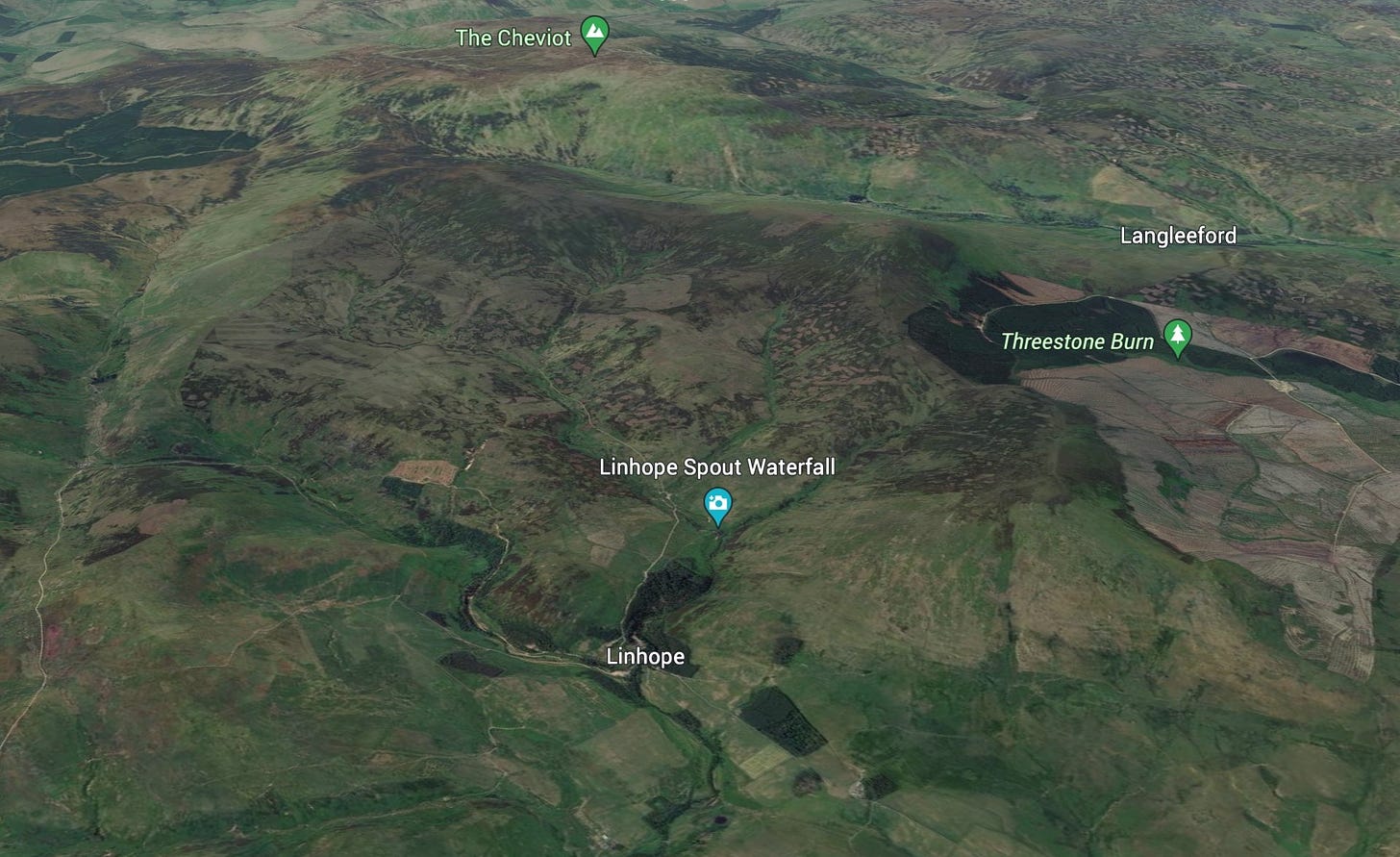
The Northumberland National Park is the most northerly of England’s so-called national parks and takes in 1,049km (405 square miles) of uplands, which include “the rich heritage of Hadrian’s Wall, the breathtaking beauty of the remote uplands of the Cheviot Hills and the fine historical landscapes of the border valleys to the Scottish Border”.
Like so many of our national parks, large areas are controlled by private landowners – including the Duke of Northumberland, a ‘passionate’ shooter, described in slavering terms in a 2011 Shooting UK article as “having shot his first pheasant in 1966 at the age of 10 and his first grouse the following year” (his younger brother Lord James Percy, part of a family of shooting fanatics, was noted in a 2014 Gentleman’s Journal article as “a keen shot, averaging 100 days [shooting] a year”).
The Duke or the ducal corporation is the owner of Alnwick Castle, as well as Warkworth Castle and Prudhoe Castle in Northumberland; Syon House and Syon Park in London; Hulne Park and Hulne Priory at Alnwick; Albury Park in Surrey, and other listed buildings such as Brizlee Tower. As part of his Northumberland Estates business empire, the gun-toting Duke and the wider family owns numerous grouse moors in England and Scotland (including Burncastle Estate in the Lammermuir Hills).
Linhope, which lies at the foot of the Cheviots covers some 14,000 acres and “includes a wide range of nationally important wildlife habitats and archaeological features.” And of course shoots. It was featured in a typically hyperbolic puff piece ‘Four English estates to know this season’ on the website of gun manufacturers Purdey the month after the Secret Monitor visited.
Purdey, their eye always on selling expensive guns to wealthy landowners to shoot down small birds, panted about the estate ranging “from high, heather-clad hilltops to the valley floor, where the river cuts down from Linhope Spout waterfall”, the latter a much-visited tourist attraction. The article goes on to say how the estate
“offers the visiting gun some of the most exciting and challenging shooting in the UK, in a truly wild and rugged landscape largely untouched by man… From fast, high clouds of partridge crossing from one side of the valley to the other, to pheasants powering high over the guns from hanging woodland, there is a bird to challenge and satisfy everyone.”
Note that phrase ‘clouds of partridge’ when you watch the video below…
Linhope Estate and a ‘partridge shoot’.
The landscape is indeed beautiful, but ‘untouched’ and ‘wild’? And a ‘challenge’? What the Secret Monitor actually found and filmed was an enormous shoot based around release pens at Shank Burn, acres of modified moorland, and thousands of Red-legged Partridges and pheasants being beaten from a release area straight over a small army of guns, each standing with a loader, in the valley below.
This is not the only release site on this moor. Using Bing, the Secret Monitor has counted eight or nine local release sites similar in scale to this one at Shank Burn…
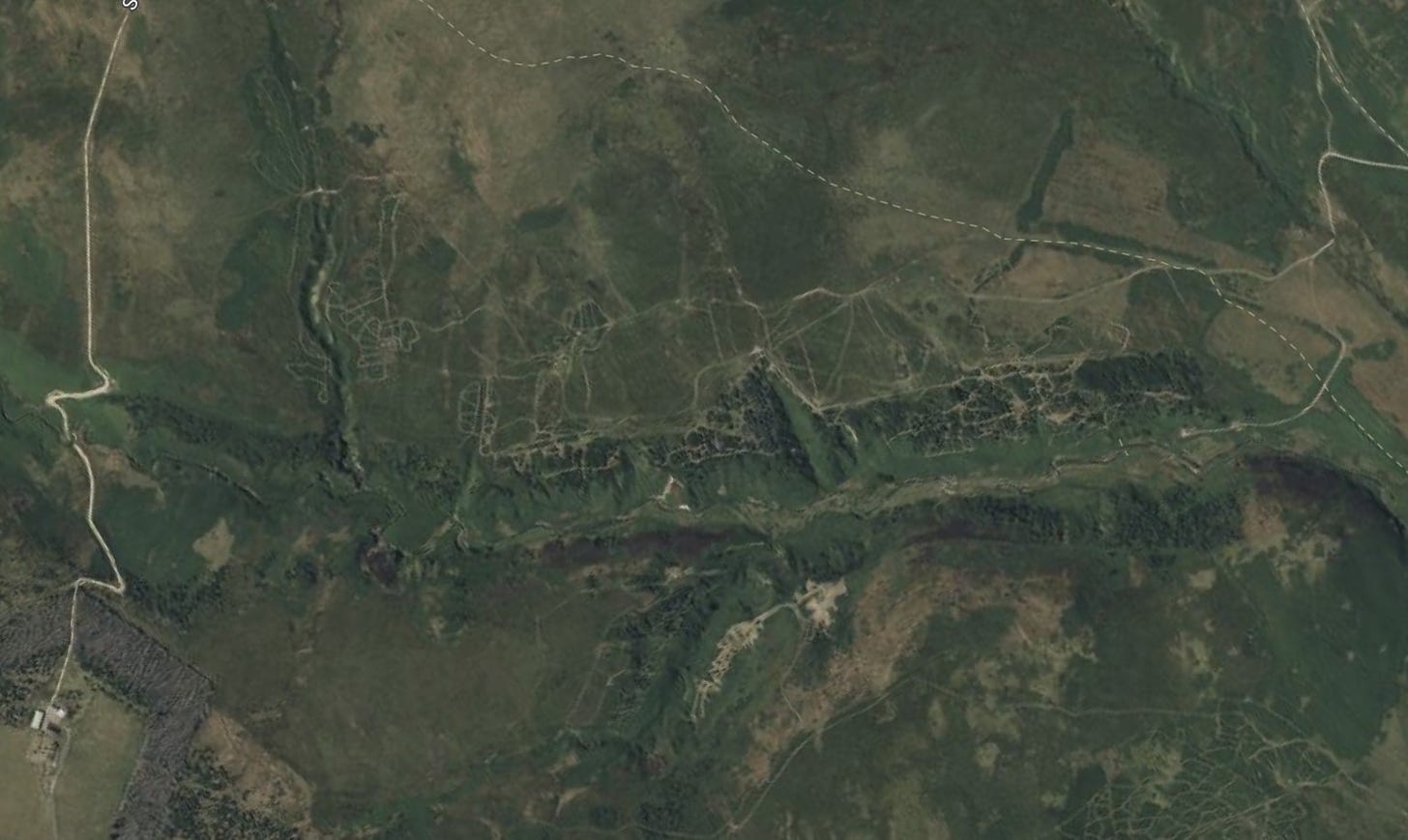
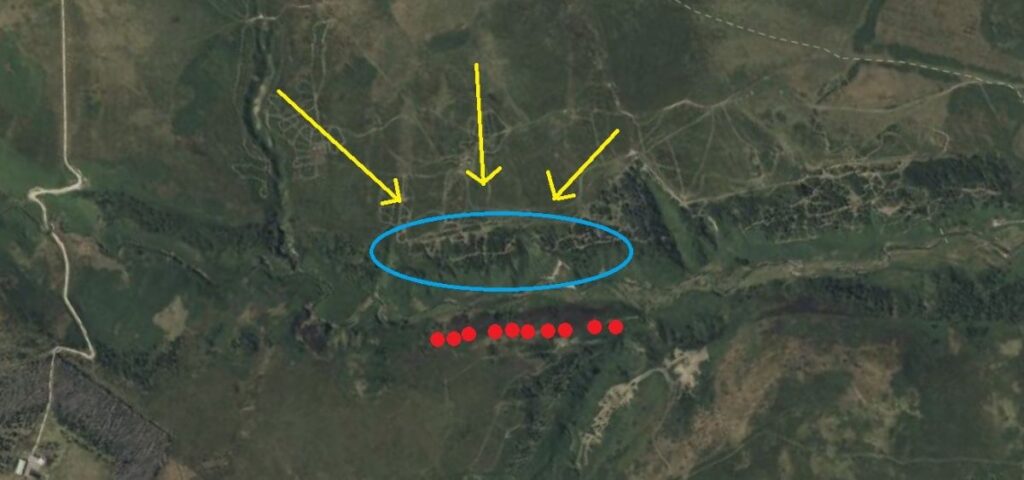
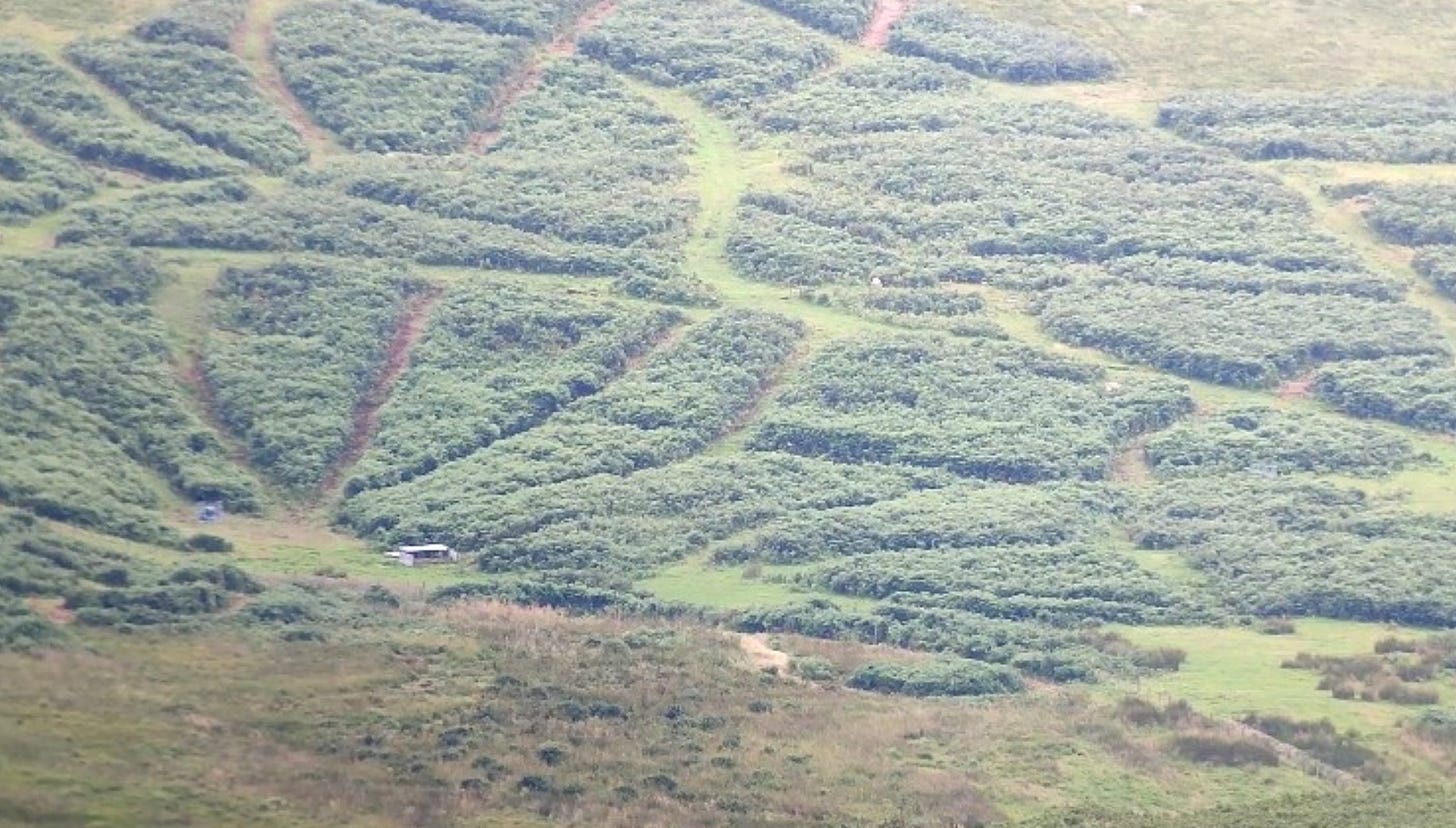
Note some viewers may find scenes in this video upsetting
If you can’t bring yourself to watch the video just note that few birders will ever see this many birds in one spot, unless they’re on an estuary perhaps. It is certainly entirely unnatural to see partridges in these numbers away from a shoot, and speaks volumes about the intensive nature of modern-day driven shooting where each ‘gun’ will expect to kill tens if not hundreds of birds on their ‘day out’ in the countryside.
This is not ‘sport’ or ‘tradition’ – it is simply slaughter.
Incidentally, given how dogs are used in the shoot to flush birds to the guns and ‘pick up’ dead or wounded birds afterwards, there is an irony in the fact that Linhope – open access land under the 2000 Countryside and Rights of Way (or CRoW) Act – has managed to get a ban on dogs ‘at the Land Manager’s discretion’ because of possible ‘disturbance to grouse’! So a shooter can bring a gun and ‘disturb’ the local wildlife as they like, but peaceable members of the public out for a quiet walk have to leave their companion animals at home…

Crow traps
Behind the scenes (and on repeat visits) the Secret Monitor was able to record all the paraphernalia that a ‘modern’ shoot uses to ‘protect’ the vast numbers of birds it sells to its clients (‘modern’ in quotes, given that shoots are still using the barbaric ‘management practices’ like snares, Fenn traps, and stink pits first dreamed up hundreds of years ago) and that shooters who ‘love their sport’ are all too prepared to ignore.
The war on native predators is year-round and (again) intensive. A number of the larger traps routinely used by gamekeepers on shooting estates are illustrated below. They are currently legal and being used lawfully (see our page on Cage Traps and the Law) but in what world should it be legal to confine for days on end any sentient animal like the crow being used as a ‘call bird’ in the Larsen trap shown below (and yes that is a skinned rabbit hanging in front of him as bait)? Oh, that’s right, in a world where laws are written by land-owning politicians…
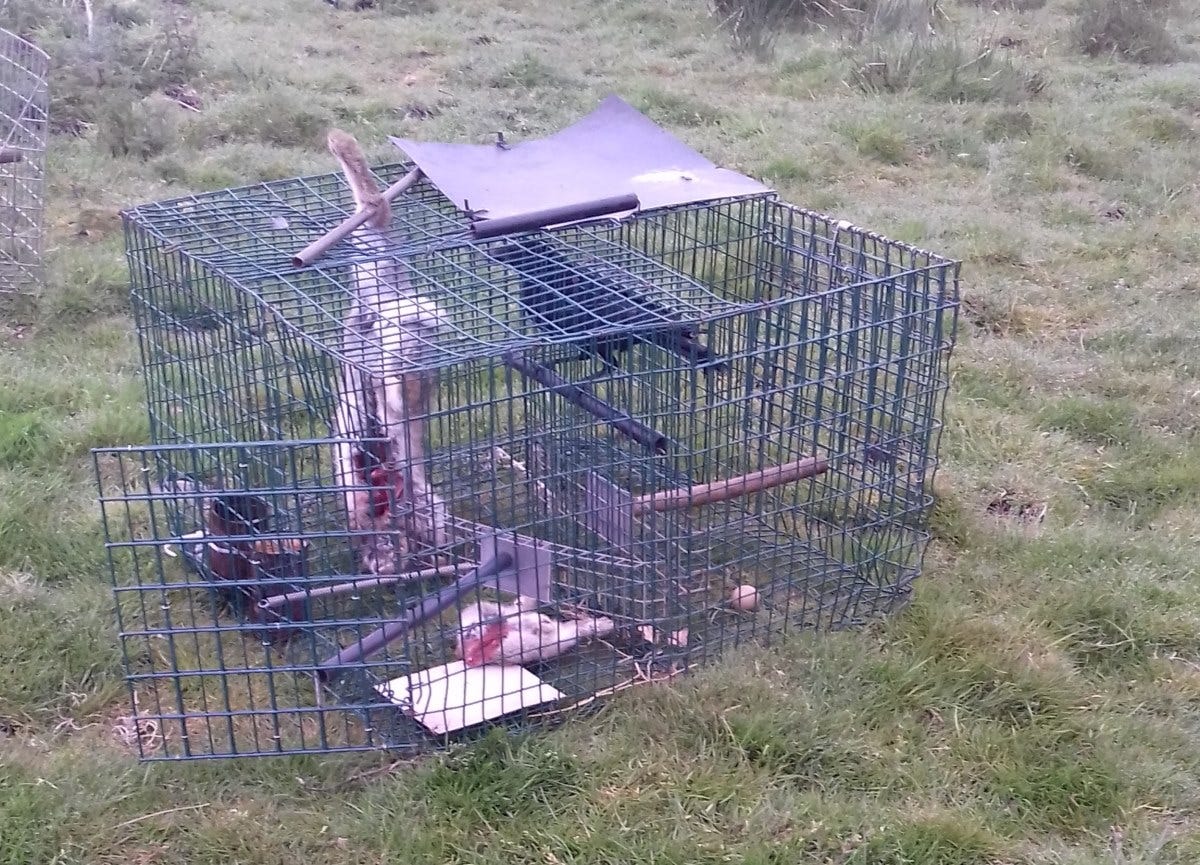
This clam trap is also legal, though it occupies more of a ‘grey area’. Baited with meat like this, they are sometimes used to illegally trap birds of prey like Buzzards (though that’s not what’s being suggested here, m’lud)…
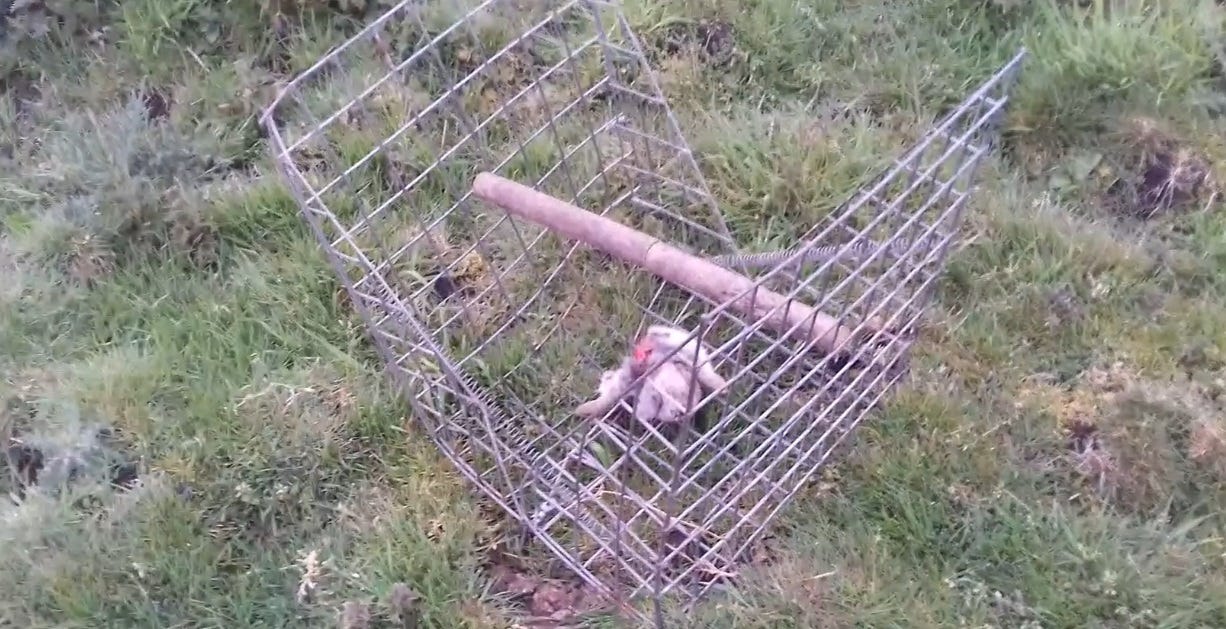
The Secret Monitor found pheasant feathers in this third trap. Also note the corvid (most likely a Carrion Crow) nest in the tree above. Shooting estates will sometimes allow a dominant corvid pair to establish a territory to keep other corvids away, then at the right time in early spring when all territories are taken and they know where all of the pairs are (and before the grouse settle to nest) they will kill them all over a two or three week period.
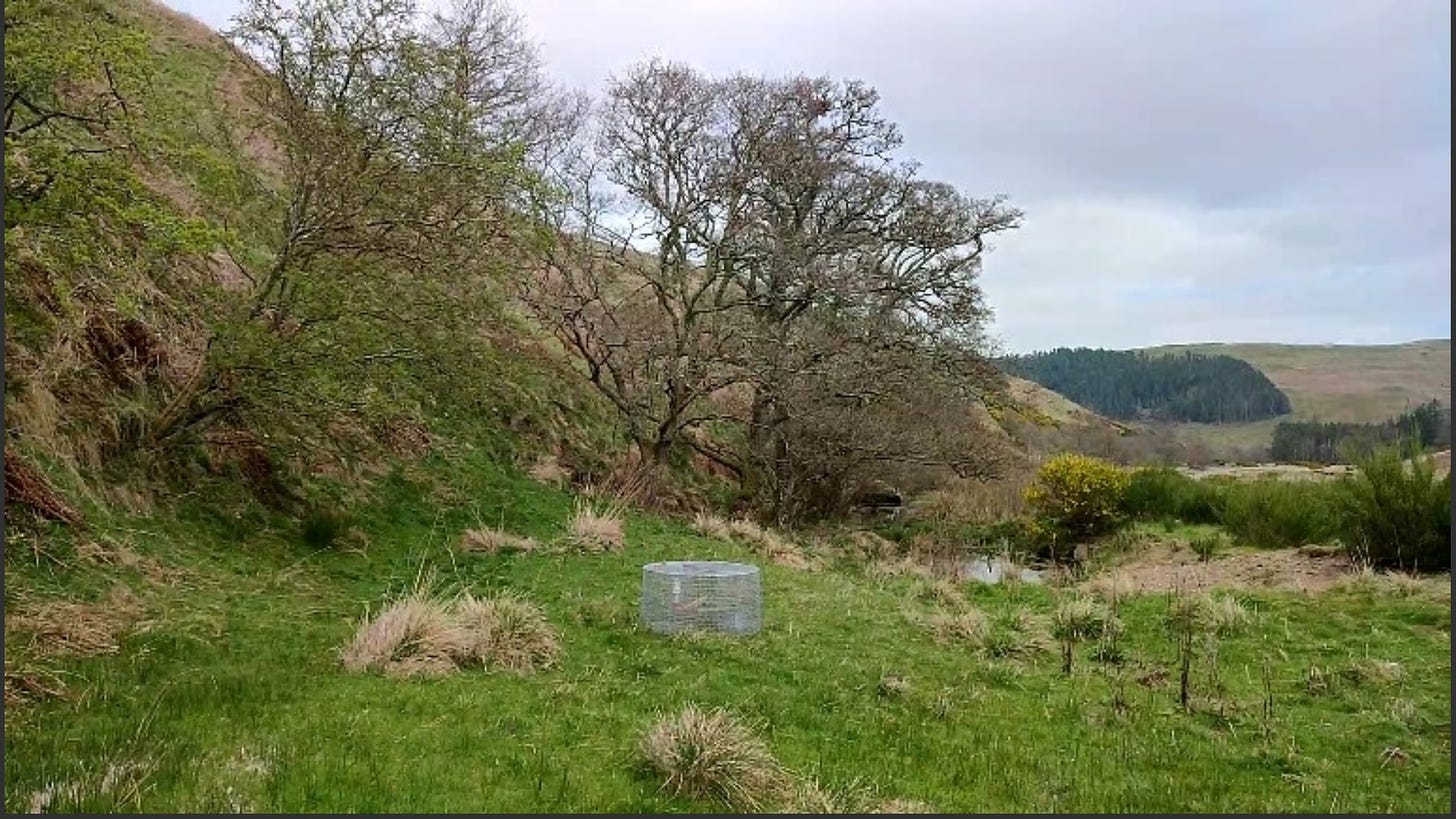
‘Non-natives’
Remarkably the Secret Monitor also discovered this gem of an exchange on a messaging app.
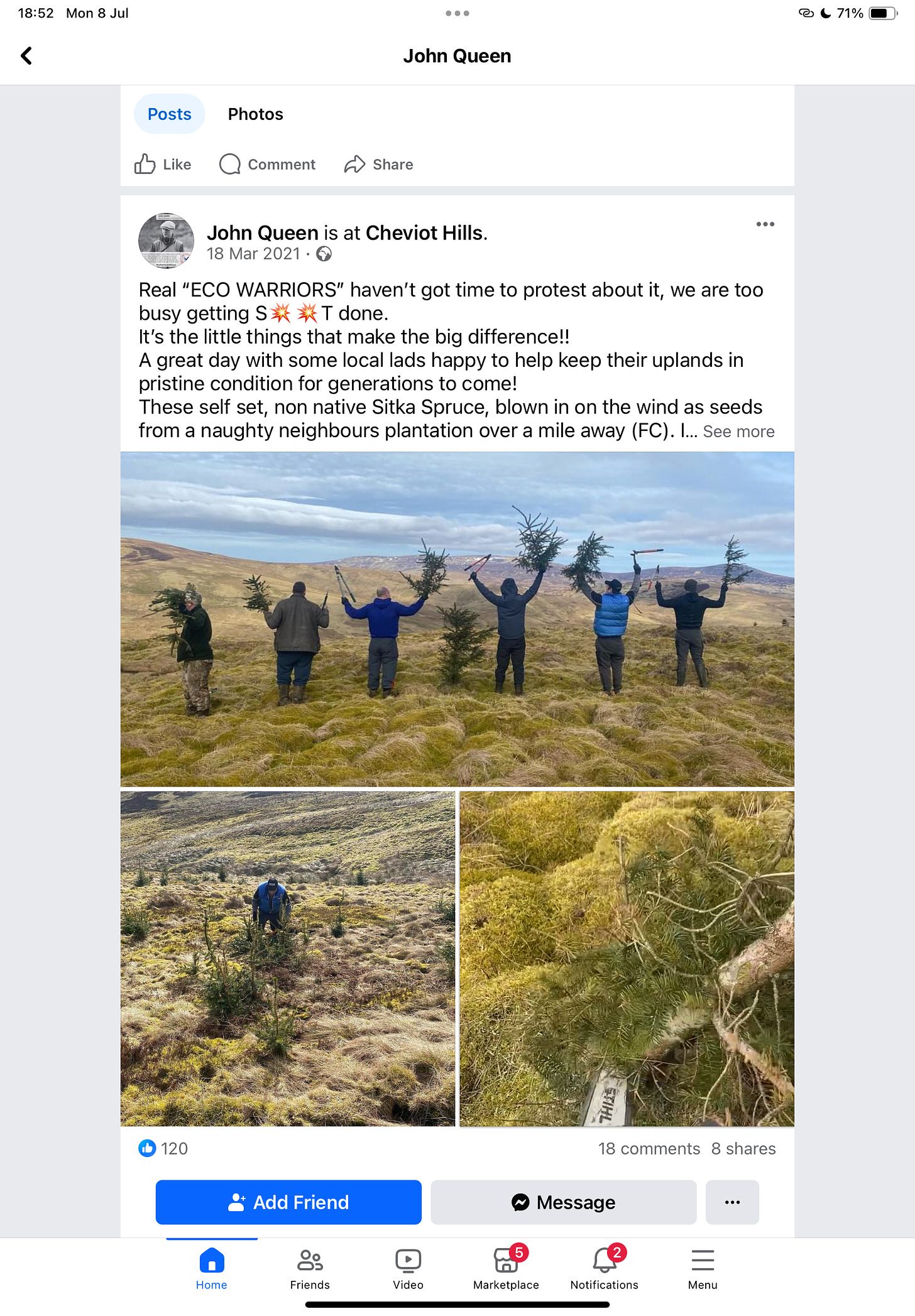
John Queen, the Linhope Estate Manager, is lauded by shooting lobbyists as something of a ‘genius’ when it comes to Red Grouse and promoting shooting. Not so much of a genius, though, not to see the irony in bragging about pulling up non-native Sitka Spruce trees (originally from the west coast of North America and planted in their millions by wealthy landowners making a quick buck from forestry operations) while overseeing the release of ‘clouds’ of non-native Red-legged Partridges (originally from Iberia) or non-native Common Pheasants (originally from Asia) that many of the same wealthy landowners are now flogging to their shooting clients…
Non-natives, traps and snares, tonnes of lead shot, feathered cash cows, keepers posing as eco-warriors, and all in a National Park. ‘Conservationists my arse’ as Jim Royle might have said
Final thought
It’s worth explaining here, perhaps, why so many of these ‘non-natives’ are being released in ever-increasing numbers on grouse moors which used to be exclusively reserved for the native Red Grouse (recently proposed as a full species by the International Ornithological Committee). While Linhope grouse moor (around 1.5km to the north of Shank Burn) is a ‘successful’ shoot, like many other similar shoots it has good years and bad and is increasingly expensive to run. Upland shooting estate owners, in general, are finding it harder to guarantee ‘surplus’ Red Grouse to gun down as the springs become wetter and nesting conditions become less favourable, so they are releasing thousands of non-native birds on poorer quality fringe moor – just like the moorland featured in this post. The birds released here are nothing more than sacrificial lambs to help pay for the intensive man-hours spent on the ‘proper’ grouse moor operation.
Supporters of grouse moor licencing – which effectively endorses a grouse shooting industry – might like to take a moment to ask themselves if this is really what they want to see…
One result of massively expanding shooting operations away from the remote uplands to lower more accessible areas is the increased opportunities for public (and Secret Monitor) scrutiny. You don’t have to be a wildlife activist to be mightily upset by scenes like the ones the Secret Monitor has posted here.
The future of grouse moors (and grouse shooting) is in the balance now, and it’s interesting to note that ‘Lord Max’, the Duke of Northumberland’s youngest son, put the 9,500 acre Rothbury Estate up for sale last year, calling it ‘the single largest ringfenced carbon offsetting opportunity to come to the open market in England’. Carbon offsetting is far more lucrative than shooting grouse, and ‘rewilding’ may be the natural consequence of unnatural man-made climate change.
Either is far better than keeping vast tracts of land aside just so the world’s gun owners can fly in to put holes into small birds…

